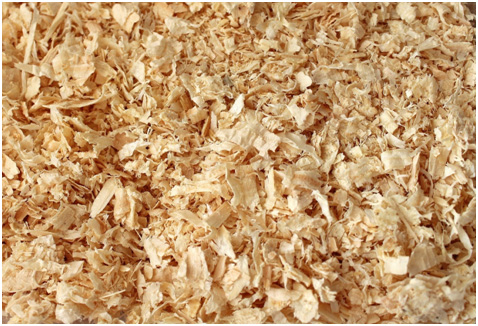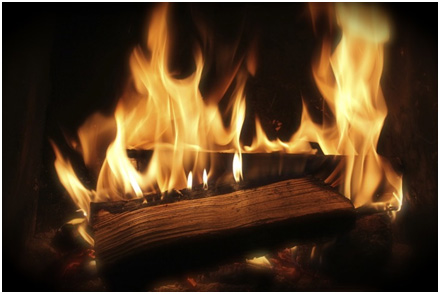Using wet wood to get a fire going will leave you cold and frustrated…regardless of how much effort you put into it.
Even if you do get a fire going (which in a survival situation is better than nothing) your fire will be inefficient and will require much more maintenance to see it through the night.
The reason why it won’t burn is that the water contained in the wood is absorbing the heat, preventing the wood from absorbing enough heat to ignite.
As heat continues to be applied to the wood, the water turns to vapor, absorbing a huge quantity of heat in the process. It isn’t until this process is finished that the hydrocarbon gasses start leaving the wood so that they can then catch fire.
Basically your best bet is to make sure that you have the driest tinder, kindling, and fuel possible.

It’s one thing if you have a cord of wood neatly stacked out in your woodshed, but how do you find dry wood in the wild?
Below are three quick tips you can use in a pinch:
The Snap Method:
The Premise: dry kindling is devoid of a high water content and will snap easily instead of bending.
How To do it: take your smaller bits of kindling no thicker than your thumb and grasp them at both ends. Pull the ends towards the middle, the kindling should snap in the middle.
What to look for: twigs, sticks, and other kindling that snaps cleanly and easily is an indicator of dry kindling.How do you know if your fuel is dry?
The Percussion Method:
The Premise: as wood dries out, its acoustical properties change.
How to do it: grab two sample pieces of wood at one end and let them dangle, one from each hand. Swing the bottom ends together, and listen to the sound at impact.
What to look for: dry wood will “ring” or “bonk” when they hit each other. Wet wood, however, will issue a dull thud on impact.
Cracking the code:
The Premise: as fuel wood pieces dry, the wood fiber shrinks, which causes visible radius cracks to open up on the ends of the wood.
How to do it: examine the ends of a sample piece, looking for cracks that radiate from the core to the bark.
What to look for: big, deep radius cracks are a good indicator of well-seasoned wood.
Note: this is the least reliable indicator, as the cracks won’t close back up if the seasoned wood is subsequently allowed to re-absorb rainwater.

